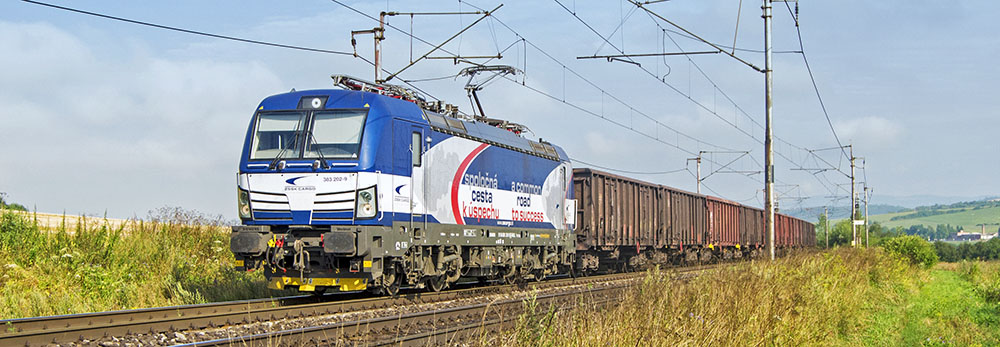Prihláste sa na odber noviniek


The Gemer region in southern Slovakia has long been known for its rich natural resources. In the distant past, precious and colourful ores and iron ore called the region "the iron heart of Hungary". This was also the reason for the construction of railway lines. Their dense network still exists here today, and the transport of minerals still dominates - but today, it is mainly limestone, sintered magnesia, or talc.
Southern Railway Line of Slovakia
The main traffic artery on the railways across Slovakia is the north route. Still, theoretically, it would be much faster to go south between Slovakia's two largest cities, Bratislava and Košice. There is also a so-called southern railway line, yet in poor technical condition. Most of the route is single-track, and between Zvolen and Košice it is not even electrified (although electrification of the section between Košice and Moldava nad Bodvou has already begun). Unit trains with fuel run on this section between Stožok near Zvolen and Kapušany near Prešov. ZSSK CARGO trains also serve one of the largest sawmills in Slovakia in Tomášovce near Lučenec. But at Gemer there are also local lines branching from this mainline. And not only to the south to neighbouring Hungary but also to the north, where the so-called Gemer branches lead to valleys where mineral wealth and wood from the surrounding forests is collected and transported.
The Plešivec Railway Hub
ZSSK CARGO has reliably provided freight rail transport in this region for years. The heart of the operation is Plešivec, where the Gemer branches meet the main line. ZSSK CARGO also has a depot here and a sufficient supply of diesel locomotives that transport unit trains, but especially groups of wagons and single wagonloads to marshalling stations in Zvolen and Košice and also through the border crossing station Lenartovce to Hungary. The freight traffic here includes the branch lines.
In the Gemer Valleys
Three railway lines from Plešivec lead to Muráň, Slavošovice and Dobšiná. They have long been served by the legendary machines associated with this region. The Class 751 locomotives are pulling local trains here, supplying mixed freight trains on the southern route with single wagonloads and groups of wagons originating in the Gemer branches.
Lubeník is the first station served by local trains on the Muráň line. Here, SMZ Jelšava is an important customer. The siding leading to Lubeník also has its locomotive, and magnesite is loaded here into complete trains, groups of wagons, and single wagonloads. Gravity discharge Uadds-type wagons go here to load raw materials, but you can also find covered wagons or single wagonloads with loaded containers on the "Muráň local". If needed, the local train continues to Revúca. The siding of state forests (Lesy SR) diversifies the freight train with hardwood. In the past, it was also loaded at the end station Muráň, but due to the change in the zoning of the national parks and the reduction of felling, this part of the line became dormant. Interestingly, this line was initially supposed to be built up to Tisovec, but WWII changed the plans.
Unfortunately, the second of the Gemer branches - the line to Slavošovice - is the least used one. In the past, SHP Slavošovce used the services of ZSSK CARGO, mainly exporting finished products from paper mills in covered Hbis-type wagons.
On the third line, leading from Rožňava to Dobšiná, there is still a lively movement of freight rail traffic. Eurotalc in Rožňava transfers the talcum powder from trucks to railway wagons of the Raj-type. The white powder from Gemerská Poloma is one of the world's best deposits of this raw material. Local trains with Class 751 locomotives, which are sometimes seconded by Class 742 locomotives, continue to load wood to Betliar and the terminal station Dobšiná. Still, even here, more polluting and road infrastructure-damaging road transport often wins. Together with Lubeník and the aforementioned Revúca, both individual and groups of wagons with wood are destined for domestic logistics trains and export to neighbouring European countries. There is also a customer in Dobšiná that imports goods for its production. The Kovostroj company imports cold-rolled steel products from various foreign suppliers for further processing through the Belgian port in Antwerp.
Cement, sand, limestone
The most significant customers in terms of volume for ZSSK CARGO are located on the main line between Zvolen and Košice. We have already written about the transportation of limestone aggregate from Včeláre quarry to the cement factory in Turňa nad Bodvou. What is new is the change in the type of wagons, when Faccs wagons were recently replaced by other types of dump wagons of the Falls type on these trains. However, the CRH company also uses the railway to export trains with cement, which go to Hungary via the transit border station Čaňa - Hidasnémeti. However, the Turňa nad Bodvou siding also loads dolomite aggregates. This rock goes to the Košice steel mill, and a group of up to 13 Eas-type open wagons regularly go from there to Haniska near Košice.
Dense Network = Great Potential
Slovakia has great potential for greater use of rail transport in single wagonloads and wagon groups because of the high density of the existing railway network, one of the densest in Europe. Gemer is a perfect example of this. Companies here have an excellent opportunity to switch to the most environmentally friendly form of land transport, rail, in a region with natural wealth. This is mainly about the potential of wood transportation, including on the last of the local Gemer lines connecting Moldava nad Bodvou with Medzev. ZSSK CARGO is ready for the daily service of these lines and to meet customers with train connections according to their needs.
Photos: Ádám Kóródy, Viktor Šesták, Csoma Bence